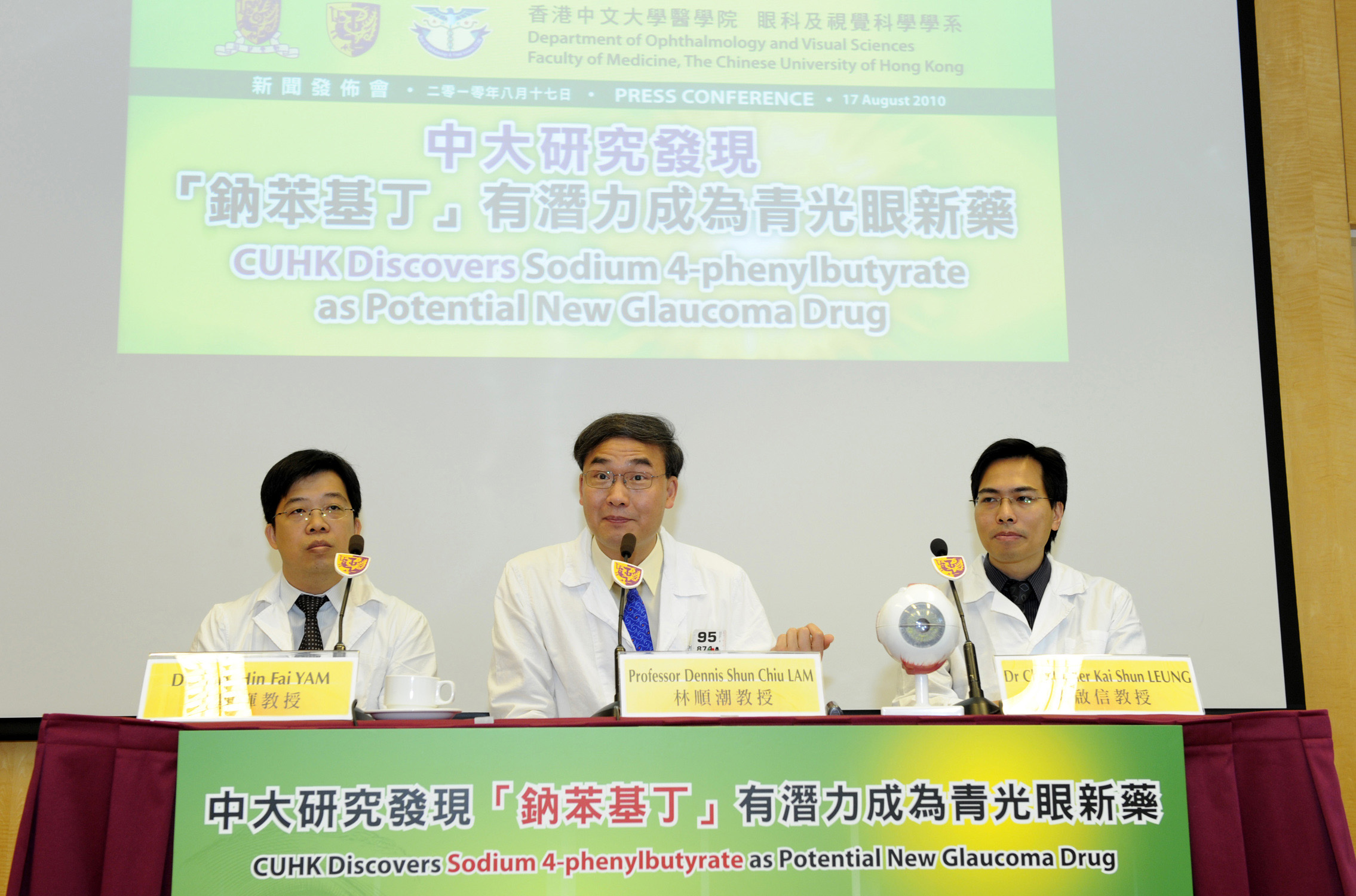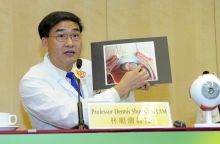CUHK
News Centre
CUHK Discovers Sodium 4-phenylbutyrate as a Potential New Glaucoma Drug (U.S. Provisional Patent Obtained)
Glaucoma is one of the leading causes of blindness worldwide. A previous study showed that glaucoma was the leading cause of blindness with 23% prevalence in Hong Kong. Glaucoma is mainly caused by an increase in pressure inside the eye ball (eye pressure), leading to progressive and irreversible damage of the optic nerve. This will result in blindness if timely and appropriate treatments are not given.
Dr Christopher Kai-shun Leung, Associate Professor, Department of Ophthalmology & Visual Sciences (DOVS), Faculty of Medicine, The Chinese University of Hong Kong (CUHK) said, “Among the many causes of glaucoma, steroid-induced glaucoma is an important one. Firstly, this is a preventable condition. Secondly, over 50% of glaucoma patients are steroid responders and they have to be extra-cautious when using steroid medications.”
The research team of the DOVS at CUHK discovered that topical Sodium 4-Phenylbutyrate (PB) is able to prevent and treat steroid-induced glaucoma in rabbits. The basic mechanism involved is different from the currently available glaucoma medications used clinically. In normal situation, aqueous produced inside the eyeball is drained through a sponge like structure (with many sieves/openings) called the trabecular meshwork (TM) located at the angle of the anterior chamber of the eyeball. The TM cells are able to remove extracellular deposits and debris inside the TM keeping the sieves well open and patent. Dr Gary Yam, Assistant Professor, DOVS at CUHK and Co-Principal Investigator of the project said, “In steroid-induced glaucoma in rabbits, there is an increase in TM cell death and therefore extracellular deposits and debris, leading to blockage of the drainage channels, pressure rise and glaucoma. PB has been shown to be able to prevent cell death and reduce extracellular deposits and debris in the TM, and thus prevent and treat steroid-induced glaucoma.”
Professor Dennis Shun-chiu Lam, Chairman of DOVS at CUHK and Principal Investigator of this research project explained, “This is an important breakthrough because PB uses a different mechanism from that of the currently available glaucoma medications. This may help doctors to treat patients whose eye pressure cannot be controlled with all the currently available medications. Moreover, PB with its ability to prevent steroid-induced glaucoma will increase the safety of using steroid in treating various eye diseases e.g. uveitis and diabetic macular edema, etc. and as an anti-inflammatory drug after eye surgeries especially in glaucoma patients.”
The local research team is in the process of applying a U.S. patent for the discovery of the new usage of PB as a potential new glaucoma drug. PB is not a new drug by itself and has been registered in the U.S. FDA for clinical treatment of diseases like urea cycle disorders. The time required from laboratory research to clinical bedside usage for glaucoma is expected to be much shorter, probably 2 to 3 years from now.
(From Left) Dr. Gary Hin Fai YAM, Assistant Professor, Department of Ophthalmology and Visual Sciences; Professor Dennis Shun Chiu LAM, Chairman, Department of Ophthalmology and Visual Sciences; and Dr. Christopher Kai Shun LEUNG, Associate Professor, Department of Ophthalmology and Visual Sciences, Faculty of Medicine, CUHK





